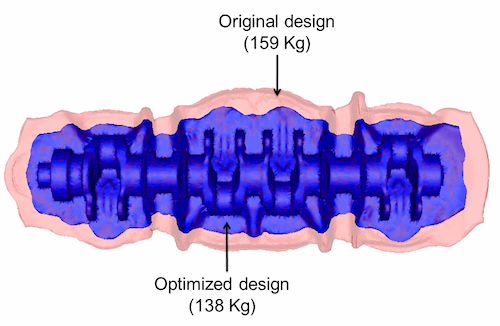Companies of the manufacturing industry evolve in extremely competitive contexts and have to face ever-increasing demands from their ordering customers.
How do these companies manage to increase their competitiveness through simulation and maximize their return on investment?
Accelerate the time to market by reducing the development time
The development cycle is traditionally based on a trial and error approach in order to validate the production sequences (design of tools/molds, identification of process conditions, …) after several iterations. Significant gains are possible with switching to a modern virtual manufacturing approach. The objective is to shorten the development time, limit the occupancy time of machines for testing and ensuring production of quality from the first batches. This is the concept of “First-Time-Right”.
Now the simulation process is not limited to product simulations which ensures the correct sizing parts but it is completed by the process simulations which guarantee the reliability of the manufacturing and also provide information on the properties use of parts.
In a classic process, we will carry out a first definition of sequences (number of operations, choice of press, design and order of a first set of tools) which will be subject to a series of tests temporarily immobilizing a production machine. Modifications will generally be necessary and will perform a new iteration (modifications, order and production of a new set of tools) before reaching a correct production sequence.
In an optimized process, the process simulation is integrated upstream of the development cycle directly after the initial phases of project analysis and CAD design. At this stage, several options are considered and it becomes very easy to virtually test and succeed quickly to the most reliable and cost effective solution. Thanks to the performance of the software and means of computation, the additional time granted by the phase of simulation does not penalize the time of the overall development cycle because it largely outweighs the time required for a second classic iteration.

Based on customer feedback, the development cycle product can last up to 4 months since the request for quote, until production begins. The implementation upstream of the process simulation, reduces the total cycle time from 4 to 2 months.
Substantial benefits by reducing the quantity of materials used
For closed die forging, the deformation sequence involves an excess of material called “burr”. Significant gains can thus be obtained by enhancing yield improvement, especially in medium or large series production. Automatic optimization is an essential functionality of the FORGE® software which allows the user to determine the minimum dimensions of the piece or of the preform, while respecting obvious manufacturing criteria such as complete and flawless filling of the engraving. The software is able to launch a whole series of calculations automatically according to precise variation sequences and tend quickly towards the best result.

On average, we observe that the automatic optimization applied to billets or rolled preforms saves between 2 or 3 % on the total amount of the total material involved. Within our clientele, let’s take the example of an Italian company producing non-ferrous components (brass and aluminium) and whose production capacity daily reaches 50,000 kg/day. Considering the price at the ton oscillating from 1500 to 2000 euros depending on the alloy considered, a reduction of 2% of the materials involved (i.e. 1 ton per day would save a daily average of 1750 euros, or almost 385,000 euros over one year.
A great way to increase your ROI thanks to our simulation!


